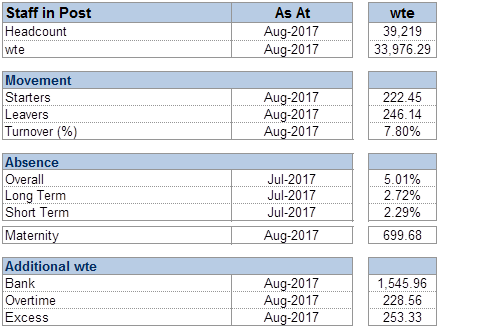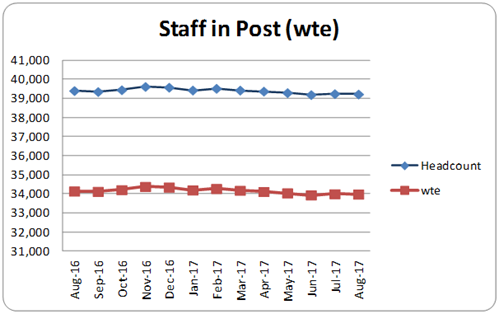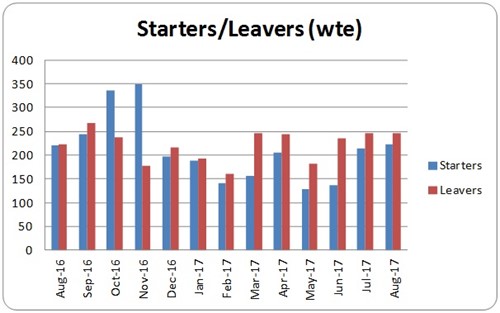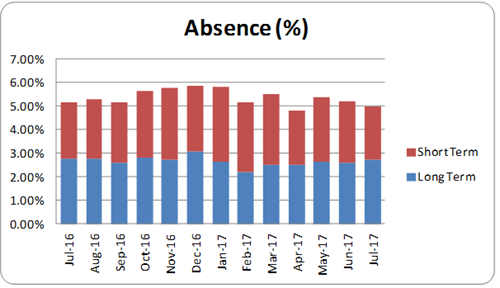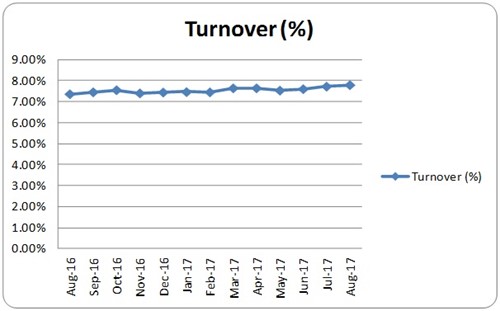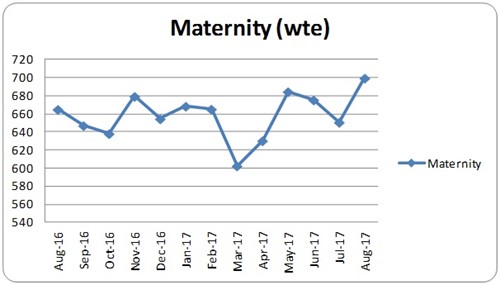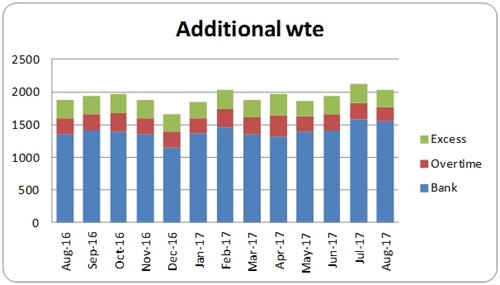Workforce Planning is best described as:
“Getting the right people with the right skills and competences in the right place at the right time to deliver services that provide the best possible patient care, within a budget that you can afford.”
In practice this involves the following:
- Designing your future workforce – Understanding what the workforce needs to look like to meet service need and influencing this process by ensuring that workforce considerations are part of the service and financial planning process.
- Developing your future workforce – Through recruitment, retention, education commissioning and staff development.
- Delivering your future workforce – By understanding the management actions that will be necessary to ensure your workforce plans is delivered and that all your staff, service partners and stakeholders are engaged in the process.
NHSGGC Workforce Plan (2022-2025)
Each year NHSGGC is required by the Scottish Government to develop and publish a workforce plan which sets out the strategic direction for workforce development and the resulting changes to our workforce over the next year and beyond.
The NHSGGC Workforce Plan is developed using the NHS Scotland six steps methodology and the NHS Careers Framework. Both of these workforce models enable us to take a coherent view of the workforce across all job families and sub-groups. The Career Framework in particular is a useful tool for modelling and implementing workforce change and we are promoting and encouraging the use of this tool in NHSGGC.
Local workforce planning activity is managed within the Acute Services Division and within the Health and Social Care Partnerships (HSCPs). In addition, there are workforce plans which focus on cross sector issues and plans based on service delivery models.
The workforce implications of service change and redesign are also set out in NHSGGC’s financial and service plans at Board and Divisional/HSCP level. These workforce implications highlight any planned recruitment activity and are further analysed in the project implementation documents (PIDs) which are prepared to support any significant service change and which set out the financial, workforce and equality impacts of any proposed changes.
All of the above workforce information is analysed and summarised by the workforce planners in order to develop the annual NHSGGC Workforce Plan.
NHSGGC Medical Workforce Plans
The three Workforce Plans focus on Medical and Dental workforce issues and will form part of an overarching plan which will include other elements of the Acute workforce including Nursing and Midwifery, Allied Health Professionals and all other NHS staff groups. Significant work has already been undertaken in Nursing and Midwifery in identifying the workforce challenges with further work for AHP staff and non-clinical roles underway. All workforce plans will form part of a comprehensive Board Workforce Plan and link to National workforce plans.
The Acute Services Medical Workforce Plan describes the current medical workforce challenges facing the Acute Division in delivering clinical services in 2017/2018. The plan takes into consideration key Acute Strategy documents including the Acute Division Delivery Plan and Strategy for Acute Services.
The Mental Health Services Medical Workforce Plan provides a summary of the workforce data across Mental Health services within Partnerships. The document references the Royal College of Psychiatrists recommendations for a standard workforce model, which has been developed and applied for Medical Staffing, and this work is the first step in being able to develop such a model within NHSGGC. NB – a link will be added to access the plan on publication (Autumn 2017)
The Oral Health (Dentist) Workforce Plan focuses on the need to support our current workforce to meet future service needs. The workforce plan contains a series of actions designed to initiate the changes required to create a workforce with the capacity and capabilities required to meet future needs. The workforce plan focuses on Dentists working within Acute Secondary Care Dental Services and the Public Dental Service (PDS) i.e. direct employees of the Board. NB – a link will be added to access the plan on publication (Autumn 2017)
While each of the plans reflects the specific needs of the service area they cover some of the common themes include:
- Medical staff recruitment and retention
- Creating a stable medical workforce by reducing medical locum usage;
- Developing the current and future medical workforce ensuring access to clinical skills, training and leadership development for clinical leaders;
- Improving medical workforce productivity through application of the allocate job planning tool and review of EPAs across the Acute Division;
- The ageing medical workforce and the impact of this changing demographic for the future medical workforce;
- Shared Services and how this will impact on the future Medical Workforce.
The NHS Scotland Workforce Planning Community
The NHS Scotland Workforce Planning Community Website was established in 2015 for use by the NHS Scotland Workforce Planning and Human Resources community; however it also contains information which may be useful to:-
- NHS staff who are not operational workforce planners but need to be aware of the importance of workforce planning their own services to meet the workforce, service and financial challenges of the future.
- Ad-hoc visitors from partner agencies who want to obtain information on workforce planning in NHS Scotland.
The site has been designed to allow visitors to quickly access information on workforce planning. Most of the site is open and you do not have to be a member of the Community to access information; however access is restricted to certain pages which are appropriate for NHS Scotland National Workforce Planning Forum members only (this may restrict some search functionality).
Using this site will allow you to:-
- Identify workforce planning contacts in each of the NHS Scotland Territorial and Special Health Boards and access workforce planning documents.
- Understand background information on workforce planning and how it integrates into service delivery and financial planning.
- Understand the context in which workforce planning sits within overall NHS Scotland.
- Obtain additional information on the Skills for Health “Six Steps Methodology to Integrated Workforce Planning” (which is used across NHS Scotland) and how it can be best utilised as part of a workforce planning process.
- Develop an awareness of the importance of good workforce data and information to inform the planning process.
- Secure details of and links to recent workforce planning activities within NHS Job Families and Care Groups.
- Understand how to access a variety of support tools and useful links.
The 6 Steps Methodology to Integrated Workforce Planning
The “Six Steps Methodology to Integrated Workforce Planning” has been designed by Skills for Health as a practical approach to planning that ensures you have a workforce of the right size with the right skills and competences.
The Six Steps methodology is used by the NHS across all four countries in the United Kingdom and is also used by a number of social care providers.
Use of the Six Steps methodology within NHS Scotland was noted in the revised workforce planning guidance published in CEL 32 (2011). The Methodology identifies those elements that should be in any workforce plan, taking into account the current and future demand for services, the local demographic situation and the impact on other services, while working to within you define budget. Using the Six Steps provides you with a tool which will:
- Establish a systematic practical approach that supports the delivery of quality patient care, productivity and efficiency
- Ensure closer integration between NHS Boards and social care providers in planning the wider workforce.
- Identify the key learning and educational needs of the existing and future workforce, the evidence of which will inform national education and training requirements
- Ensure that in developing workforce plans they support corporate goals and objectives
- Ensure that workforce planning decisions taken are sustainable and realistic
- a scalable approach, from small wards plans to large organisations
The Six Steps are:
- Step 1: Defining the plan
- Step 2: Mapping service change
- Step 3: Defining the required workforce
- Step 4: Understanding workforce availability
- Step 5: Planning to deliver the required workforce
- Step 6: Implement, monitoring and refresh.
NHS Scotland Workforce Planning Guidance
Revised Workforce Planning Guidance was issued to all NHSScotland organisations in December 2011 to provide Boards with a consistent framework to support evidence based workforce planning.
The guidance is designed to support and assist those responsible for leading on workforce planning, in particular the development of workforce plans at service, NHS Board and regional level.
The National Health and Social Care Workforce Plan
Published in June 2017 the 2017/18 National Health and Social Care Workforce Plan (Part 1) covers NHS Scotland and:
- Aims to support NHS Scotland organisations, including independent NHS contractors in the community, to identify, develop, retain and support the workforce they need to deliver safe and sustainable services to Scotland’s people;
- Will enable NHS Scotland organisations to work together over time to broaden this aim in order to help deliver a whole system approach to health and social care;
- Provides an overview of the current NHS Scotland workforce and an assessment of what it could look like in the future;
- Sets out how improved workforce planning can benefit NHS Scotland services at national, regional and local levels.
Part 1 of the Plan has made workforce planning recommendations specific to NHS Scotland.
Parts 2 (Social Care) and 3 (GP supplement) of this Plan (to be published in late 2017, early 2018) will recommend actions for different parts of the system and will be undertaken using a phased approach, reflecting on-going discussions between NHS Scotland, local authorities, primary care, professional and regulatory bodies, trade unions, Integration Joint Boards and the third and independent sector.
